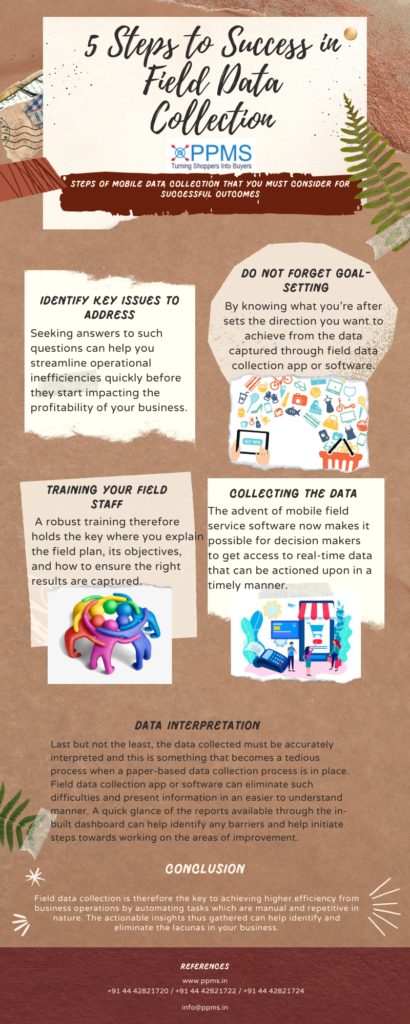There is no denying the fact that the process of field data collection helps in improving customer experiences, evaluating operational progress, and gaining an edge over competition. But how that process is executed can often make the difference in whether you end up achieving these crucial objectives or not.
Traditional data collection is fraught with many challenges such as the time and effort that goes into gathering insights, analyzing them, and putting in place an action plan that could fix the chinks in the armor.
Today, an increasing number of businesses are investing in mobile field data collection app or software to expedite the process of collecting data from the field.
5 Steps to Success in Field Data Collection
If you’re looking to make this all-important transition from Paper to Smartphones and Tablets, here are 5 important steps of mobile data collection that you must consider for successful outcomes:

#1. Identify Key Issues to Address
Looking to find new markets? Want to figure out the reasons why there was a sudden drop in sales from a region? Looking for ways to beat the competition? Want to get a sense of the market before introducing a new product?
Seeking answers to such questions can help you streamline operational inefficiencies quickly before they start impacting the profitability of your business.
#2. Do not Forget Goal-Setting
By knowing what you’re after sets the direction you want to achieve from the data captured through field data collection app or software.
#3. Training your Field Staff
Without a proper training of the field staff on how to execute your mobile data collection strategy, the metrics you end up capturing will either be inaccurate or yield no results. A robust training therefore holds the key where you explain the field plan, its objectives, and how to ensure the right results are captured.
#4. Collecting the Data
The advent of mobile field service software now makes it possible for decision makers to get access to real-time data that can be actioned upon in a timely manner. Respondents must also be assured on the data privacy aspects to increase the participation rate.
#5. Data Interpretation
Last but not the least, the data collected must be accurately interpreted and this is something that becomes a tedious process when a paper-based data collection process is in place. Field data collection app or software can eliminate such difficulties and present information in an easier to understand manner. A quick glance of the reports available through the in-built dashboard can help identify any barriers and help initiate steps towards working on the areas of improvement.
Conclusion
Some of the biggest enterprises in the world today are building a retail ecosystem on data science. Field data collection is therefore the key to achieving higher efficiency from business operations by automating tasks which are manual and repetitive in nature. The actionable insights thus gathered can help identify and eliminate the lacunas in your business. So, are you all set to take the plunge and empower your field force with tools that matter?
